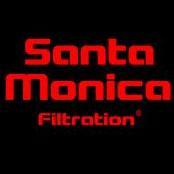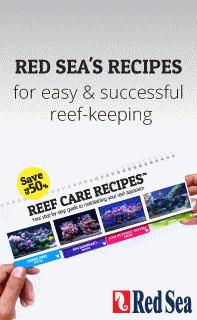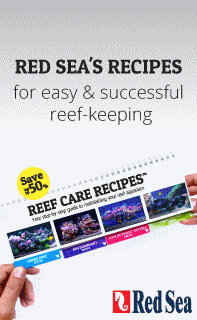-
Topics
-
Latest Update
-
1
-
0
WTB fishes and corals
Looking to stock a new tank. Lmk if youre letting go of reef safe fishes and easy corals thanks! -
0
瑞尔森大学本科毕业证成绩单ryerson硕士学位证文凭Q/微993398773办理加拿大大学真实学历留信认证留服认证教育部认证回国证明加拿大本科教育部认证硕士文凭诚招代理Ryerson University
瑞尔森大学本科毕业证成绩单ryerson硕士学位证文凭Q/微993398773办理加拿大大学真实学历留信认证留服认证教育部认证回国证明加拿大本科教育部认证硕士文凭诚招代理Ryerson University #加拿大毕业证#美国毕业证#学生卡#英国毕业证#澳洲毕业证#新西兰毕业证#法国毕业证#德国毕业证#修改成绩单#存档可查学历学位认证#大使馆认证#回国人员证明,QQ/微信:993398773远洋教育Adam 为留学生留学认证提供以下服务: 【毕业证、成绩单等全套材料,从防伪到印刷,从水印到钢印烫金,跟学校100%相同】 【真实使馆认证(留学人员回国证明),使馆存档可通过大使馆查询确认】 【真实教育部学历认证,教育部存档,教育部留服网站100%可查】 联系人:Adam QQ/微信:993398773 ◆为什么您的学位需要在国内进一步认证?! 如果您计划在国内发展,那么办理国内教育部认证是必不可少的。一般企事业用人单位在您应聘时都会需要您提供这个认证。办理教育部认证所需资料众多且烦琐,所有材料您都必须提供原件,我们凭借丰富的经验,帮您快速整合材料,让您少走弯路。 专业服务,请勿犹豫联系我 如果您真实毕业回国,对于学历认证无从下手,请联系我,我们免费帮您递交 诚招代理:本公司诚聘当地代理人员,如果你有业余时间,或者你有同学朋友需要办理,或者你想帮助他们,有兴趣就请联系我 你赢我赢,共创双赢 你做代理,可以帮助同学朋友 你做代理,可以拯救失足青年 你做代理,可以挽救一个个人才 你做代理,你将是别人人生的转折点 你做代理,可以改变自己,改变他人,给他人和自己一个机会 认证咨询顾问Adam为您服务-远洋教育-金牌顾问 Adam 【此贴为实体公司营业注册所特有,勿被抄袭的无良商家坑骗!】 「澳洲」澳洲国立大学 麦考瑞大学 卧龙岗大学 拉筹伯大学 新南威尔士大学 堪培拉大学 塔斯玛尼亚大学 莫道克大学 艾迪斯科文大学 西澳大学 科廷大学 圣母大学 新南威尔士州 悉尼科技大学 查理斯特大学 悉尼大学 南十字星大学 西悉尼大学 纽卡斯尔大学 新英格兰大学 查理斯达尔文大学 昆士兰州大学 昆士兰大学 瞻母斯库克大学 阳光海岸大学 邦德大学 中央昆士兰大学 格里菲斯大学 南昆士兰大学 澳洲天主教大学 昆士兰理工大学 阿德雷德大学 南澳大学 富林德斯大学 塔斯玛尼亚大学 维多利亚州迪肯大学 墨尔本大学 墨尔本皇家理工大学 斯文本大学 莫那什大学 维多利亚大学 等等 「英国」罗伯特哥登大学 布里斯托大学 约克大学 金斯顿大学 布拉德福德大学 埃塞克斯大学 雷丁大学 伦敦大学 亚非学院 伦敦大学学院 皇后玛丽大学 布莱顿大学 赫德福特大学 谢费尔德哈拉姆大学格拉摩根大学 斯特灵大学 赫瑞瓦特大学 皇家霍洛维学院 华威大学 萨塞克斯大学 谢菲尔德大学 诺丁汉特伦特大学 圣心女子学校 兰卡斯特大学 萨里大学 斯特灵大学 格拉斯哥大学 拉夫堡大学 伯明翰大学 纽卡斯尔大学 诺丁汉大学 爱丁堡大学 诺桑比亚大学 考文垂大学 斯旺西大学 等等 「美国」加州国立大学 哈佛大学 爱荷华州立大学 斯坦福大学 加利福尼亚大学 美国加州大学 西弗吉尼亚大学 北弗吉尼亚大学 耶鲁大学 强生威尔士大学 奥本大学 蒙特拿阿本大学 安德森大学 爱德菲大学 亚利桑那州立大学 美国洲际大学 阿德菲大学 阿尔弗雷德大学 安德鲁斯大学 波士顿大学 查尔斯顿大学 宾夕法尼亚切尼大学 德堡大学 肯特州立大学 密歇根州立大学 宾州州立大学 佩斯大学 普林斯顿大学 萨福克大学 普渡大学 维吉尼亚理工大学 夏威夷马诺大学 休斯顿大学 中央华盛顿大学北达卡他州立大学 席勒国际大学 圣诺伯特学院 俄亥俄州立大学 密西西比大学 南新罕布什尔大学 等等 「德国」弗赖堡大学 德国维尔茨堡大学 汉堡大学 曼海姆大学 波恩大学 特里尔大学 奥尔登堡大学科隆大学 汉诺威大学 新媒体国际学校 美因茨大学 基尔大学 慕尼黑工业大学 明斯特大学 等等 「法国」格勒诺布尔大学 集团法国里尔高等商业学院 埃菲尔工程师院校集团 法国北方高等商学院 法国国立里昂第二大学 国立奥尔良大学 国立卡昂大学 国立克莱蒙费朗第一大学 国立图尔大学 法国南锡高等商学院ART服装设计学院 国立里尔第三大学 法国国立昂热大学 国立缅因大学 国立兰斯大学 等等 「加拿大」西安大略大学 西蒙菲莎大学 西蒙弗雷泽大学 渥太华大学 英属哥伦比亚大学 维多利亚大学 滑铁卢大学 圭尔夫大学 纪念大学 纽布伦斯威克大学 卡尔顿大学 温莎大学 约克大学 肯高迪亚大学 魁北克大学蒙特利尔分校 蒙特爱立森大学 莱斯布里奇大学 劳里埃大学 特伦特大学 圣弗朗西斯泽维尔大学 主教大学 爱德华王子岛大学 温尼伯大学 圣玛丽大学 湖首大学 安省理工学院 布鲁克大学 劳伦森大学 圣托马斯大学 布兰登大学 瑞尔森大学 皇后大学 阿尔伯塔大学 菲莎国际学院 曼尼托巴大学 凯波布兰顿大学 圣文森特山大学 麦克敦大学 卡普顿大学 尼皮辛大学 多伦多大学 麦吉尔大学麦克马斯特大学 爱德华王子岛大学 等等 「俄罗斯」莫斯科国立大学 罗斯托夫国立大学 圣彼得堡国立大学 新西伯利亚国立大学 俄罗斯人民友谊大学 俄罗斯国立大学 罗斯托夫国立大学 伯尔姆国立大学 达吉斯坦国立大学 托姆斯克国立大学 图拉国立大学 喀山国立大学 乌拉尔国立大学 等等 「新西兰」新西兰Unitec理工学院 奥克兰大学 奥克兰理工大学 奥塔哥大学 新西兰维多利亚大学 梅西大学 怀卡托大学 林肯大学 新西兰坎特伯雷大学 坎特伯雷语言中心 剑桥中学 基督城语言中心 基督城英语学院 皇冠英语学院 新西兰多米尼英语学校 多米尼英语学校 丹尼丁英语学校 奥克兰语言中心 等等 「新加坡」新加坡南洋理工大学 新加坡管理大学 新加坡国立大学 新加坡理工学院 新加坡共和理工学院 新加坡谈马锡理工学院 新加坡管理发展学院 新加坡南洋艺术学院 新加坡澳世敦管理及科技学院 詹姆斯库克大学 新加坡国际校区 新加坡东亚管理学院 新加坡管理发展学院 新加坡英华美学院 等等 「日本」东京大学 京都大学 大阪大学 东京工业大学 东北大学 庆应义塾大学 九州大学 名古屋大学 北海道大学 筑波大学 神户大学 千叶大学 早稻田大学 广岛大学 金泽大学 冈山大学 东京理科大学东京医科牙科大学 大阪市立大学 熊本大学 德岛大学 大阪府立大学 岐阜大学 东京农工大学 等等 「爱尔兰」英语学习大学 香农酒店管理学院 沃特福德学院 唐道克理工学院 都柏林大学 圣三一学院利默瑞克大学 考克大学 卡洛理工学院 都柏林格里菲斯学院 都柏林商学院 都柏林美国学院 都柏林理工学院 都柏林城市大学 波特贝洛学院 健康和社会保健学院 爱尔兰幼儿师范学院 爱尔兰国立梅努斯大学 爱尔兰国立高威大学 爱尔兰国立都柏林大学 阿斯隆理工学院 等等 「韩国」高丽大学 延世大学 庆熙大学 中央大学 东国大学 祥明大学 梨花女大 成均馆汉阳大学 首尔女大 檀国大学 光云大学 弘益大学 加图立大学 诚信女子大学 建国大学 庆南情报大学 灵山大学 东义大学 釜山国立大学 釜山外国语大学 金浦大学 江南大学 京畿大学 公州国立大学 南首尔大学 忠北国立大学 安东国立大学 启明大学 岭南大学 加耶大学 庆北国立仁荷大学 江原道大学 等等 「马来西亚」林国荣学院 马来亚大学 精英大学 双科技国际大学 汝来国际学院 英迪学院 伯乐学院 百育灵学院 万达学院 第一工艺学院 史丹福学院 思特雅大学 等等 「荷兰」蒂尔堡大学 阿姆斯特丹自由大学 阿姆斯特丹大学 马斯特里赫特管理学院 格罗宁根大学 鹿特丹伊拉斯姆斯大学 埃因霍芬理工大学 瓦格宁根大学 内梅亨大学 海牙社会学院 海牙大学 汉恩大学 阿姆斯特丹商学院 阿姆斯特丹国际大学 CHN莱瓦顿大学 NHL北方莱瓦顿管理学院 荷兰大学 萨克逊大学等等 「芬兰 瑞典 丹麦 挪威」哥本哈根大学 奥胡斯大学 奥尔堡大学 尼尔森布鲁克商学院 南丹麦大学 丹麦南西兰商学院 丹麦商业学院 罗斯基勒大学 丹麦科技大学 丹麦IBC 丹麦教育大学 挪威农业大学 挪威商业学院 奥斯陆高等学院 斯坦万格大学 奥散德高等学院 哥德堡大学 瑞典皇家理工大学 达拉纳大学 严雪平大学 韦克舌大学 卡尔斯塔德大学 哈尔姆斯塔德芬兰院校 赫尔辛基大学 拉普兰塔理工大学 土尔库大学 坦佩雷理工大学 于韦斯屈莱大学 赫尔辛基理工大学 坦佩雷理工学院 赫尔辛基艺术与设计大学 奥卢大学 约恩苏大学 库奥皮奥埃斯波-万塔理工学院 阿卡达理工学院 等等 ●[马来西亚]:林国荣学院 马来亚大学 精英大学 双科技国际大学 汝来国际学院 英迪学院 伯乐学院 百育灵学院 万达学院 第一工艺学院 史丹福学院 [爱尔兰]英语学习大学.香农酒店管理学院 沃特福德学院....... ●[新西兰]:新西兰Unitec理工学院.奥克兰大学 奥克兰理工大学 奥塔哥大学 、 新西兰维多利亚大学 梅西大学 怀卡托大.学 林肯大学 新西兰坎特伯雷大学 坎特伯雷语言中心 剑桥中学 基督城语言中心 基督城英语学院 皇冠英语学院 新西兰多米尼英语学校 多米尼英语学校 丹尼丁英语学校 奥克兰语言中心 ●[新加坡] 新加坡南洋理工大学 新加坡管理大学 新加坡国立大学 新加坡理工学院 新加坡共和理工学院 新加坡谈马锡理工学院 新加坡管理发展学院 新加坡南洋艺术学院.新加坡澳世敦管理及科技学院 詹姆斯库克大学新加坡国际校区 新加坡东亚管理学院 新加坡管理发展学院 新加坡英华美学院 ●[美国]:俄亥俄州立大学OSU,加州大学洛杉矶分校UCLA,华盛顿州立大学WSU,普渡大学Purdue,俄勒冈大学Oregon,纽约大学NYU,西雅图大学Seattle,南加州大学USC,宾州州立大学PSU,匹兹堡大学PITT,加州理工学院CIT,西北大学NWU,宾夕法尼亚大学Pennsylvania,密歇根州立大学MSU,密歇根大学UMICH,波士顿大学BU,德克萨斯大学奥斯汀分校utexas,哈佛大学Harvard,麻省理工学院MIT,田纳西大学UTK,帕森斯设计学院Parsons,佩斯大学Pace,普林斯顿大学Princeton,托莱多大学Toledo,杜克大学Duke,芝加哥大学Chicago,达特茅斯学院Dartmouth,拉文大学La Verne,康奈尔大学Cornell,约翰霍普金斯大学JHU,布朗大学Brown,莱斯大学Rice,埃默里大学Emory,圣母大学,范德堡大学Vandy,加州大学伯克利分校UCB,卡内基梅隆大学CMU,乔治城大学Georgetown,弗吉尼亚大学UVa,塔夫斯大学Tufts,维克森林大学WFU,布兰迪斯大学Brandeis,威廉玛丽学院wm,波士顿学院BC,佐治亚理工学院Gatech,利哈伊大学Lehigh,罗切斯特大学Rochester,威斯康星大学WISC,内布拉斯加大学UNL,伦斯勒理工学院RPI,华盛顿大学UW,加州大学戴维斯分校UCD,加州大学欧文分校UCI,加州大学UCSB,天普大学Temple,叶史瓦大学Yeshiva,肯塔基大学Kentucky,乔治华盛顿大学GWU,雪城大学SU,马里兰大学UMD,佩珀代因大学Pepperdine,乔治亚大学UGA,克莱姆森大学Clemson,福特汉姆大学Fordham,明尼苏达大学UMN,迈阿密大学UM,密西西比大学Mississippi,南卫理公会大学SMU,康涅狄格大学Connecticut,爱荷华大学Iowa,印地安那大学伯明顿分校IUB,特拉华大学UD,伍斯特理工学院WPI,贝勒大学baylor,马凯特大学Marquette,纽约宾汉姆顿大学binghamton,纽约奥尔巴尼大学Albany,克拉克大学Clark,科罗拉多大学CU-Boulder,密苏里大学Missouri,堪萨斯大学KU,北卡罗来纳州立大学NCSU,俄亥俄大学ohio,俄克拉荷马大学Oklahoma,德州A&M大学TAMU,佛罗里达州立大学FSU,斯坦福大学Stanford,加州大学圣地亚哥分校UCSD,凤凰城大学UPX,旧金山大学USF,休斯敦大学UH,斯蒂文斯理工学院SIT,阿拉巴马大学Alabama,塔尔萨大学TU,德雷塞尔大学Drexel,爱荷华州立大学ISU,加州大学河滨分校UCR,丹佛大学DU,堪萨斯州立大学KSU,罗格斯大学Rutgers,佛蒙特大学UVM,奥本大学Auburn,美国东北大学NEU,纽约州立大学石溪分校SBU,亚利桑那州立大学ASU,亚利桑那大学UA,加州大学圣克鲁兹分校UCSC,纽约州立大学布法罗分校Buffalo,纽约理工学院NYIT,北卡罗莱纳大学UNC,罗德岛设计学院RISD,加州旧金山分校UCSF,伊利诺伊大学香槟分校UIUC,杜兰大学Tulane,社区大学College,阿肯色大学,犹他大学,杨百翰大学BYU,辛辛那提大学,霍夫斯特拉大学,肯特州立大学,旧金山艺术大学AAU,莱特州立大学,欧道明大学,罗德岛大学URI,南达科他州立大学,阿肯色大学小石城分校,长岛大学布鲁克林校区,海斯堡州立大学FHSU,圣莫尼卡社区学院,北达卡他州立大学 ,席勒国际大学 ,圣诺伯特学院, 俄亥俄州立大学 ,密西西比大学, 南新罕布什尔大学 ●[荷兰]:蒂尔堡大学 .阿姆斯特丹自由大学 阿姆斯特丹大学 马斯特里赫特管理学院 格罗宁根大学 鹿特丹伊拉斯姆斯大学 屯特大学 代尔夫特理工大学 埃因霍芬理工大学 瓦格宁根大学....... ●[法国]:格勒诺布尔大学集团 法国里尔高等商业学院 埃菲尔工程师院校集团 法国北方高等商学院法国国立里昂第二大学 国立奥尔良大学 国立卡昂大学 国立克莱蒙费朗第一大学 国立图尔大学 法国南锡高等商学院 ART服装设计学院 国立里尔第三大学 法国国立昂热大学 国立缅因大学 国立兰斯大学 ●[芬兰]:[瑞典]:[丹麦]:[挪威]:哥本哈根大学 奥胡斯大学 奥尔堡大学 尼尔森?布鲁克商学院南丹麦大学 丹麦南西兰商学院 丹麦商业学院 罗斯基勒大学 丹麦科技大学 丹麦IBC 国际商学院 海宁商业工程学院 罗斯基勒商学院 丹麦教育大学★挪威院校 奥斯陆大学 挪威科技和自然大学挪威卑尔根大学 特罗姆瑟大学 挪威农业大学 本公司是留学创业和海归创业者们的桥梁。一次办理,终生受用,一步到位,高效服务。详情请在线咨询办理,欢迎有诚意办理的客户咨询!洽谈。 办理假毕业证在国内能用吗Q\微信993398773挂科拿不到毕业证怎么办Q\微信993398773毕业证丢了怎么办Q\微信993398773没有正常毕业怎么办理毕业证Q\微信993398773没毕业可以办学历认证吗Q\微信993398773您是否因为中途辍学、挂科而没有正常毕业Q\微信993398773您是否因为递交材料不齐而被拒之门外Q\微信993398773您是否因没正常毕业而导致回国得不到教育部认证Q\微信993398773在校挂科了不想读了、成绩不理想怎么办Q\微信993398773找工作没有文凭怎么办Q\微信993398773办理本科/研究生文凭Q\微信993398773有本科却要求硕士又怎么办Q\微信993398773办理本科/硕士毕业证Q\微信993398773网上买文凭可靠吗Q\微信993398773买国外文凭质量Q\微信993398773国外本科毕业证怎么办理Q\微信993398773国外大学文凭高仿真制作Q\微信993398773办国外文凭可找工作Q\微信993398773怎么办理国外假毕业证Q\微信993398773哪里可以制作毕业证Q\微信993398773美国哪里可以办理毕业证Q\微信993398773澳洲哪里可以办理毕业证Q\微信993398773留学生在哪里买毕业证Q\微信993398773加拿大哪里可以办理毕业证Q\微信993398773诚信办理毕业证Q\微信993398773申请学校办理成绩单Q\微信993398773办理水印成绩单Q\微信993398773办理悉尼大学成绩单Q\微信993398773多伦多办理成绩单Q\微信993398773修改成绩单GPAQ\微信993398773修改成绩单分数Q\微信993398773办理多大成绩单Q\微信993398773如何拿到国外毕业证Q\微信993398773快速拿到国外文凭Q\微信993398773快速办理国外毕业证Q\微信993398773假毕业证能查出来吗Q\微信993398773假文凭网上能查到吗 -
0
悉尼科技大学申请学校UTS毕业证成绩单信封Q/微993398773办理澳洲大学毕业证文凭留信认证留服认证教育部认证回国证明澳洲本科文凭硕士学位证毕业证University of Technology Sydney
悉尼科技大学申请学校UTS毕业证成绩单信封Q/微993398773办理澳洲大学毕业证文凭留信认证留服认证教育部认证回国证明澳洲本科文凭硕士学位证毕业证University of Technology Sydney #加拿大毕业证#美国毕业证#学生卡#英国毕业证#澳洲毕业证#新西兰毕业证#法国毕业证#德国毕业证#修改成绩单#存档可查学历学位认证#大使馆认证#回国人员证明,QQ/微信:993398773远洋教育Adam 为留学生留学认证提供以下服务: 【毕业证、成绩单等全套材料,从防伪到印刷,从水印到钢印烫金,跟学校100%相同】 【真实使馆认证(留学人员回国证明),使馆存档可通过大使馆查询确认】 【真实教育部学历认证,教育部存档,教育部留服网站100%可查】 联系人:Adam QQ/微信:993398773 ◆为什么您的学位需要在国内进一步认证?! 如果您计划在国内发展,那么办理国内教育部认证是必不可少的。一般企事业用人单位在您应聘时都会需要您提供这个认证。办理教育部认证所需资料众多且烦琐,所有材料您都必须提供原件,我们凭借丰富的经验,帮您快速整合材料,让您少走弯路。 专业服务,请勿犹豫联系我 如果您真实毕业回国,对于学历认证无从下手,请联系我,我们免费帮您递交 诚招代理:本公司诚聘当地代理人员,如果你有业余时间,或者你有同学朋友需要办理,或者你想帮助他们,有兴趣就请联系我 你赢我赢,共创双赢 你做代理,可以帮助同学朋友 你做代理,可以拯救失足青年 你做代理,可以挽救一个个人才 你做代理,你将是别人人生的转折点 你做代理,可以改变自己,改变他人,给他人和自己一个机会 认证咨询顾问Adam为您服务-远洋教育-金牌顾问 Adam 【此贴为实体公司营业注册所特有,勿被抄袭的无良商家坑骗!】 「澳洲」澳洲国立大学 麦考瑞大学 卧龙岗大学 拉筹伯大学 新南威尔士大学 堪培拉大学 塔斯玛尼亚大学 莫道克大学 艾迪斯科文大学 西澳大学 科廷大学 圣母大学 新南威尔士州 悉尼科技大学 查理斯特大学 悉尼大学 南十字星大学 西悉尼大学 纽卡斯尔大学 新英格兰大学 查理斯达尔文大学 昆士兰州大学 昆士兰大学 瞻母斯库克大学 阳光海岸大学 邦德大学 中央昆士兰大学 格里菲斯大学 南昆士兰大学 澳洲天主教大学 昆士兰理工大学 阿德雷德大学 南澳大学 富林德斯大学 塔斯玛尼亚大学 维多利亚州迪肯大学 墨尔本大学 墨尔本皇家理工大学 斯文本大学 莫那什大学 维多利亚大学 等等 「英国」罗伯特哥登大学 布里斯托大学 约克大学 金斯顿大学 布拉德福德大学 埃塞克斯大学 雷丁大学 伦敦大学 亚非学院 伦敦大学学院 皇后玛丽大学 布莱顿大学 赫德福特大学 谢费尔德哈拉姆大学格拉摩根大学 斯特灵大学 赫瑞瓦特大学 皇家霍洛维学院 华威大学 萨塞克斯大学 谢菲尔德大学 诺丁汉特伦特大学 圣心女子学校 兰卡斯特大学 萨里大学 斯特灵大学 格拉斯哥大学 拉夫堡大学 伯明翰大学 纽卡斯尔大学 诺丁汉大学 爱丁堡大学 诺桑比亚大学 考文垂大学 斯旺西大学 等等 「美国」加州国立大学 哈佛大学 爱荷华州立大学 斯坦福大学 加利福尼亚大学 美国加州大学 西弗吉尼亚大学 北弗吉尼亚大学 耶鲁大学 强生威尔士大学 奥本大学 蒙特拿阿本大学 安德森大学 爱德菲大学 亚利桑那州立大学 美国洲际大学 阿德菲大学 阿尔弗雷德大学 安德鲁斯大学 波士顿大学 查尔斯顿大学 宾夕法尼亚切尼大学 德堡大学 肯特州立大学 密歇根州立大学 宾州州立大学 佩斯大学 普林斯顿大学 萨福克大学 普渡大学 维吉尼亚理工大学 夏威夷马诺大学 休斯顿大学 中央华盛顿大学北达卡他州立大学 席勒国际大学 圣诺伯特学院 俄亥俄州立大学 密西西比大学 南新罕布什尔大学 等等 「德国」弗赖堡大学 德国维尔茨堡大学 汉堡大学 曼海姆大学 波恩大学 特里尔大学 奥尔登堡大学科隆大学 汉诺威大学 新媒体国际学校 美因茨大学 基尔大学 慕尼黑工业大学 明斯特大学 等等 「法国」格勒诺布尔大学 集团法国里尔高等商业学院 埃菲尔工程师院校集团 法国北方高等商学院 法国国立里昂第二大学 国立奥尔良大学 国立卡昂大学 国立克莱蒙费朗第一大学 国立图尔大学 法国南锡高等商学院ART服装设计学院 国立里尔第三大学 法国国立昂热大学 国立缅因大学 国立兰斯大学 等等 「加拿大」西安大略大学 西蒙菲莎大学 西蒙弗雷泽大学 渥太华大学 英属哥伦比亚大学 维多利亚大学 滑铁卢大学 圭尔夫大学 纪念大学 纽布伦斯威克大学 卡尔顿大学 温莎大学 约克大学 肯高迪亚大学 魁北克大学蒙特利尔分校 蒙特爱立森大学 莱斯布里奇大学 劳里埃大学 特伦特大学 圣弗朗西斯泽维尔大学 主教大学 爱德华王子岛大学 温尼伯大学 圣玛丽大学 湖首大学 安省理工学院 布鲁克大学 劳伦森大学 圣托马斯大学 布兰登大学 瑞尔森大学 皇后大学 阿尔伯塔大学 菲莎国际学院 曼尼托巴大学 凯波布兰顿大学 圣文森特山大学 麦克敦大学 卡普顿大学 尼皮辛大学 多伦多大学 麦吉尔大学麦克马斯特大学 爱德华王子岛大学 等等 「俄罗斯」莫斯科国立大学 罗斯托夫国立大学 圣彼得堡国立大学 新西伯利亚国立大学 俄罗斯人民友谊大学 俄罗斯国立大学 罗斯托夫国立大学 伯尔姆国立大学 达吉斯坦国立大学 托姆斯克国立大学 图拉国立大学 喀山国立大学 乌拉尔国立大学 等等 「新西兰」新西兰Unitec理工学院 奥克兰大学 奥克兰理工大学 奥塔哥大学 新西兰维多利亚大学 梅西大学 怀卡托大学 林肯大学 新西兰坎特伯雷大学 坎特伯雷语言中心 剑桥中学 基督城语言中心 基督城英语学院 皇冠英语学院 新西兰多米尼英语学校 多米尼英语学校 丹尼丁英语学校 奥克兰语言中心 等等 「新加坡」新加坡南洋理工大学 新加坡管理大学 新加坡国立大学 新加坡理工学院 新加坡共和理工学院 新加坡谈马锡理工学院 新加坡管理发展学院 新加坡南洋艺术学院 新加坡澳世敦管理及科技学院 詹姆斯库克大学 新加坡国际校区 新加坡东亚管理学院 新加坡管理发展学院 新加坡英华美学院 等等 「日本」东京大学 京都大学 大阪大学 东京工业大学 东北大学 庆应义塾大学 九州大学 名古屋大学 北海道大学 筑波大学 神户大学 千叶大学 早稻田大学 广岛大学 金泽大学 冈山大学 东京理科大学东京医科牙科大学 大阪市立大学 熊本大学 德岛大学 大阪府立大学 岐阜大学 东京农工大学 等等 「爱尔兰」英语学习大学 香农酒店管理学院 沃特福德学院 唐道克理工学院 都柏林大学 圣三一学院利默瑞克大学 考克大学 卡洛理工学院 都柏林格里菲斯学院 都柏林商学院 都柏林美国学院 都柏林理工学院 都柏林城市大学 波特贝洛学院 健康和社会保健学院 爱尔兰幼儿师范学院 爱尔兰国立梅努斯大学 爱尔兰国立高威大学 爱尔兰国立都柏林大学 阿斯隆理工学院 等等 「韩国」高丽大学 延世大学 庆熙大学 中央大学 东国大学 祥明大学 梨花女大 成均馆汉阳大学 首尔女大 檀国大学 光云大学 弘益大学 加图立大学 诚信女子大学 建国大学 庆南情报大学 灵山大学 东义大学 釜山国立大学 釜山外国语大学 金浦大学 江南大学 京畿大学 公州国立大学 南首尔大学 忠北国立大学 安东国立大学 启明大学 岭南大学 加耶大学 庆北国立仁荷大学 江原道大学 等等 「马来西亚」林国荣学院 马来亚大学 精英大学 双科技国际大学 汝来国际学院 英迪学院 伯乐学院 百育灵学院 万达学院 第一工艺学院 史丹福学院 思特雅大学 等等 「荷兰」蒂尔堡大学 阿姆斯特丹自由大学 阿姆斯特丹大学 马斯特里赫特管理学院 格罗宁根大学 鹿特丹伊拉斯姆斯大学 埃因霍芬理工大学 瓦格宁根大学 内梅亨大学 海牙社会学院 海牙大学 汉恩大学 阿姆斯特丹商学院 阿姆斯特丹国际大学 CHN莱瓦顿大学 NHL北方莱瓦顿管理学院 荷兰大学 萨克逊大学等等 「芬兰 瑞典 丹麦 挪威」哥本哈根大学 奥胡斯大学 奥尔堡大学 尼尔森布鲁克商学院 南丹麦大学 丹麦南西兰商学院 丹麦商业学院 罗斯基勒大学 丹麦科技大学 丹麦IBC 丹麦教育大学 挪威农业大学 挪威商业学院 奥斯陆高等学院 斯坦万格大学 奥散德高等学院 哥德堡大学 瑞典皇家理工大学 达拉纳大学 严雪平大学 韦克舌大学 卡尔斯塔德大学 哈尔姆斯塔德芬兰院校 赫尔辛基大学 拉普兰塔理工大学 土尔库大学 坦佩雷理工大学 于韦斯屈莱大学 赫尔辛基理工大学 坦佩雷理工学院 赫尔辛基艺术与设计大学 奥卢大学 约恩苏大学 库奥皮奥埃斯波-万塔理工学院 阿卡达理工学院 等等 ●[马来西亚]:林国荣学院 马来亚大学 精英大学 双科技国际大学 汝来国际学院 英迪学院 伯乐学院 百育灵学院 万达学院 第一工艺学院 史丹福学院 [爱尔兰]英语学习大学.香农酒店管理学院 沃特福德学院....... ●[新西兰]:新西兰Unitec理工学院.奥克兰大学 奥克兰理工大学 奥塔哥大学 、 新西兰维多利亚大学 梅西大学 怀卡托大.学 林肯大学 新西兰坎特伯雷大学 坎特伯雷语言中心 剑桥中学 基督城语言中心 基督城英语学院 皇冠英语学院 新西兰多米尼英语学校 多米尼英语学校 丹尼丁英语学校 奥克兰语言中心 ●[新加坡] 新加坡南洋理工大学 新加坡管理大学 新加坡国立大学 新加坡理工学院 新加坡共和理工学院 新加坡谈马锡理工学院 新加坡管理发展学院 新加坡南洋艺术学院.新加坡澳世敦管理及科技学院 詹姆斯库克大学新加坡国际校区 新加坡东亚管理学院 新加坡管理发展学院 新加坡英华美学院 ●[美国]:俄亥俄州立大学OSU,加州大学洛杉矶分校UCLA,华盛顿州立大学WSU,普渡大学Purdue,俄勒冈大学Oregon,纽约大学NYU,西雅图大学Seattle,南加州大学USC,宾州州立大学PSU,匹兹堡大学PITT,加州理工学院CIT,西北大学NWU,宾夕法尼亚大学Pennsylvania,密歇根州立大学MSU,密歇根大学UMICH,波士顿大学BU,德克萨斯大学奥斯汀分校utexas,哈佛大学Harvard,麻省理工学院MIT,田纳西大学UTK,帕森斯设计学院Parsons,佩斯大学Pace,普林斯顿大学Princeton,托莱多大学Toledo,杜克大学Duke,芝加哥大学Chicago,达特茅斯学院Dartmouth,拉文大学La Verne,康奈尔大学Cornell,约翰霍普金斯大学JHU,布朗大学Brown,莱斯大学Rice,埃默里大学Emory,圣母大学,范德堡大学Vandy,加州大学伯克利分校UCB,卡内基梅隆大学CMU,乔治城大学Georgetown,弗吉尼亚大学UVa,塔夫斯大学Tufts,维克森林大学WFU,布兰迪斯大学Brandeis,威廉玛丽学院wm,波士顿学院BC,佐治亚理工学院Gatech,利哈伊大学Lehigh,罗切斯特大学Rochester,威斯康星大学WISC,内布拉斯加大学UNL,伦斯勒理工学院RPI,华盛顿大学UW,加州大学戴维斯分校UCD,加州大学欧文分校UCI,加州大学UCSB,天普大学Temple,叶史瓦大学Yeshiva,肯塔基大学Kentucky,乔治华盛顿大学GWU,雪城大学SU,马里兰大学UMD,佩珀代因大学Pepperdine,乔治亚大学UGA,克莱姆森大学Clemson,福特汉姆大学Fordham,明尼苏达大学UMN,迈阿密大学UM,密西西比大学Mississippi,南卫理公会大学SMU,康涅狄格大学Connecticut,爱荷华大学Iowa,印地安那大学伯明顿分校IUB,特拉华大学UD,伍斯特理工学院WPI,贝勒大学baylor,马凯特大学Marquette,纽约宾汉姆顿大学binghamton,纽约奥尔巴尼大学Albany,克拉克大学Clark,科罗拉多大学CU-Boulder,密苏里大学Missouri,堪萨斯大学KU,北卡罗来纳州立大学NCSU,俄亥俄大学ohio,俄克拉荷马大学Oklahoma,德州A&M大学TAMU,佛罗里达州立大学FSU,斯坦福大学Stanford,加州大学圣地亚哥分校UCSD,凤凰城大学UPX,旧金山大学USF,休斯敦大学UH,斯蒂文斯理工学院SIT,阿拉巴马大学Alabama,塔尔萨大学TU,德雷塞尔大学Drexel,爱荷华州立大学ISU,加州大学河滨分校UCR,丹佛大学DU,堪萨斯州立大学KSU,罗格斯大学Rutgers,佛蒙特大学UVM,奥本大学Auburn,美国东北大学NEU,纽约州立大学石溪分校SBU,亚利桑那州立大学ASU,亚利桑那大学UA,加州大学圣克鲁兹分校UCSC,纽约州立大学布法罗分校Buffalo,纽约理工学院NYIT,北卡罗莱纳大学UNC,罗德岛设计学院RISD,加州旧金山分校UCSF,伊利诺伊大学香槟分校UIUC,杜兰大学Tulane,社区大学College,阿肯色大学,犹他大学,杨百翰大学BYU,辛辛那提大学,霍夫斯特拉大学,肯特州立大学,旧金山艺术大学AAU,莱特州立大学,欧道明大学,罗德岛大学URI,南达科他州立大学,阿肯色大学小石城分校,长岛大学布鲁克林校区,海斯堡州立大学FHSU,圣莫尼卡社区学院,北达卡他州立大学 ,席勒国际大学 ,圣诺伯特学院, 俄亥俄州立大学 ,密西西比大学, 南新罕布什尔大学 ●[荷兰]:蒂尔堡大学 .阿姆斯特丹自由大学 阿姆斯特丹大学 马斯特里赫特管理学院 格罗宁根大学 鹿特丹伊拉斯姆斯大学 屯特大学 代尔夫特理工大学 埃因霍芬理工大学 瓦格宁根大学....... ●[法国]:格勒诺布尔大学集团 法国里尔高等商业学院 埃菲尔工程师院校集团 法国北方高等商学院法国国立里昂第二大学 国立奥尔良大学 国立卡昂大学 国立克莱蒙费朗第一大学 国立图尔大学 法国南锡高等商学院 ART服装设计学院 国立里尔第三大学 法国国立昂热大学 国立缅因大学 国立兰斯大学 ●[芬兰]:[瑞典]:[丹麦]:[挪威]:哥本哈根大学 奥胡斯大学 奥尔堡大学 尼尔森?布鲁克商学院南丹麦大学 丹麦南西兰商学院 丹麦商业学院 罗斯基勒大学 丹麦科技大学 丹麦IBC 国际商学院 海宁商业工程学院 罗斯基勒商学院 丹麦教育大学★挪威院校 奥斯陆大学 挪威科技和自然大学挪威卑尔根大学 特罗姆瑟大学 挪威农业大学 本公司是留学创业和海归创业者们的桥梁。一次办理,终生受用,一步到位,高效服务。详情请在线咨询办理,欢迎有诚意办理的客户咨询!洽谈。 办理假毕业证在国内能用吗Q\微信993398773挂科拿不到毕业证怎么办Q\微信993398773毕业证丢了怎么办Q\微信993398773没有正常毕业怎么办理毕业证Q\微信993398773没毕业可以办学历认证吗Q\微信993398773您是否因为中途辍学、挂科而没有正常毕业Q\微信993398773您是否因为递交材料不齐而被拒之门外Q\微信993398773您是否因没正常毕业而导致回国得不到教育部认证Q\微信993398773在校挂科了不想读了、成绩不理想怎么办Q\微信993398773找工作没有文凭怎么办Q\微信993398773办理本科/研究生文凭Q\微信993398773有本科却要求硕士又怎么办Q\微信993398773办理本科/硕士毕业证Q\微信993398773网上买文凭可靠吗Q\微信993398773买国外文凭质量Q\微信993398773国外本科毕业证怎么办理Q\微信993398773国外大学文凭高仿真制作Q\微信993398773办国外文凭可找工作Q\微信993398773怎么办理国外假毕业证Q\微信993398773哪里可以制作毕业证Q\微信993398773美国哪里可以办理毕业证Q\微信993398773澳洲哪里可以办理毕业证Q\微信993398773留学生在哪里买毕业证Q\微信993398773加拿大哪里可以办理毕业证Q\微信993398773诚信办理毕业证Q\微信993398773申请学校办理成绩单Q\微信993398773办理水印成绩单Q\微信993398773办理悉尼大学成绩单Q\微信993398773多伦多办理成绩单Q\微信993398773修改成绩单GPAQ\微信993398773修改成绩单分数Q\微信993398773办理多大成绩单Q\微信993398773如何拿到国外毕业证Q\微信993398773快速拿到国外文凭Q\微信993398773快速办理国外毕业证Q\微信993398773假毕业证能查出来吗Q\微信993398773假文凭网上能查到吗 -
0
加州大学欧文分校毕业证丢失UCI毕业证成绩单Q/微993398773办理美国大学毕业证学位证留信认证留服认证教育部认证回国证明美国本科学位证硕士文凭成绩单 University of California Irvine
加州大学欧文分校毕业证丢失UCI毕业证成绩单Q/微993398773办理美国大学毕业证学位证留信认证留服认证教育部认证回国证明美国本科学位证硕士文凭成绩单 University of California Irvine #加拿大毕业证#美国毕业证#学生卡#英国毕业证#澳洲毕业证#新西兰毕业证#法国毕业证#德国毕业证#修改成绩单#存档可查学历学位认证#大使馆认证#回国人员证明,QQ/微信:993398773远洋教育Adam 为留学生留学认证提供以下服务: 【毕业证、成绩单等全套材料,从防伪到印刷,从水印到钢印烫金,跟学校100%相同】 【真实使馆认证(留学人员回国证明),使馆存档可通过大使馆查询确认】 【真实教育部学历认证,教育部存档,教育部留服网站100%可查】 联系人:Adam QQ/微信:993398773 ◆为什么您的学位需要在国内进一步认证?! 如果您计划在国内发展,那么办理国内教育部认证是必不可少的。一般企事业用人单位在您应聘时都会需要您提供这个认证。办理教育部认证所需资料众多且烦琐,所有材料您都必须提供原件,我们凭借丰富的经验,帮您快速整合材料,让您少走弯路。 专业服务,请勿犹豫联系我 如果您真实毕业回国,对于学历认证无从下手,请联系我,我们免费帮您递交 诚招代理:本公司诚聘当地代理人员,如果你有业余时间,或者你有同学朋友需要办理,或者你想帮助他们,有兴趣就请联系我 你赢我赢,共创双赢 你做代理,可以帮助同学朋友 你做代理,可以拯救失足青年 你做代理,可以挽救一个个人才 你做代理,你将是别人人生的转折点 你做代理,可以改变自己,改变他人,给他人和自己一个机会 认证咨询顾问Adam为您服务-远洋教育-金牌顾问 Adam 【此贴为实体公司营业注册所特有,勿被抄袭的无良商家坑骗!】 「澳洲」澳洲国立大学 麦考瑞大学 卧龙岗大学 拉筹伯大学 新南威尔士大学 堪培拉大学 塔斯玛尼亚大学 莫道克大学 艾迪斯科文大学 西澳大学 科廷大学 圣母大学 新南威尔士州 悉尼科技大学 查理斯特大学 悉尼大学 南十字星大学 西悉尼大学 纽卡斯尔大学 新英格兰大学 查理斯达尔文大学 昆士兰州大学 昆士兰大学 瞻母斯库克大学 阳光海岸大学 邦德大学 中央昆士兰大学 格里菲斯大学 南昆士兰大学 澳洲天主教大学 昆士兰理工大学 阿德雷德大学 南澳大学 富林德斯大学 塔斯玛尼亚大学 维多利亚州迪肯大学 墨尔本大学 墨尔本皇家理工大学 斯文本大学 莫那什大学 维多利亚大学 等等 「英国」罗伯特哥登大学 布里斯托大学 约克大学 金斯顿大学 布拉德福德大学 埃塞克斯大学 雷丁大学 伦敦大学 亚非学院 伦敦大学学院 皇后玛丽大学 布莱顿大学 赫德福特大学 谢费尔德哈拉姆大学格拉摩根大学 斯特灵大学 赫瑞瓦特大学 皇家霍洛维学院 华威大学 萨塞克斯大学 谢菲尔德大学 诺丁汉特伦特大学 圣心女子学校 兰卡斯特大学 萨里大学 斯特灵大学 格拉斯哥大学 拉夫堡大学 伯明翰大学 纽卡斯尔大学 诺丁汉大学 爱丁堡大学 诺桑比亚大学 考文垂大学 斯旺西大学 等等 「美国」加州国立大学 哈佛大学 爱荷华州立大学 斯坦福大学 加利福尼亚大学 美国加州大学 西弗吉尼亚大学 北弗吉尼亚大学 耶鲁大学 强生威尔士大学 奥本大学 蒙特拿阿本大学 安德森大学 爱德菲大学 亚利桑那州立大学 美国洲际大学 阿德菲大学 阿尔弗雷德大学 安德鲁斯大学 波士顿大学 查尔斯顿大学 宾夕法尼亚切尼大学 德堡大学 肯特州立大学 密歇根州立大学 宾州州立大学 佩斯大学 普林斯顿大学 萨福克大学 普渡大学 维吉尼亚理工大学 夏威夷马诺大学 休斯顿大学 中央华盛顿大学北达卡他州立大学 席勒国际大学 圣诺伯特学院 俄亥俄州立大学 密西西比大学 南新罕布什尔大学 等等 「德国」弗赖堡大学 德国维尔茨堡大学 汉堡大学 曼海姆大学 波恩大学 特里尔大学 奥尔登堡大学科隆大学 汉诺威大学 新媒体国际学校 美因茨大学 基尔大学 慕尼黑工业大学 明斯特大学 等等 「法国」格勒诺布尔大学 集团法国里尔高等商业学院 埃菲尔工程师院校集团 法国北方高等商学院 法国国立里昂第二大学 国立奥尔良大学 国立卡昂大学 国立克莱蒙费朗第一大学 国立图尔大学 法国南锡高等商学院ART服装设计学院 国立里尔第三大学 法国国立昂热大学 国立缅因大学 国立兰斯大学 等等 「加拿大」西安大略大学 西蒙菲莎大学 西蒙弗雷泽大学 渥太华大学 英属哥伦比亚大学 维多利亚大学 滑铁卢大学 圭尔夫大学 纪念大学 纽布伦斯威克大学 卡尔顿大学 温莎大学 约克大学 肯高迪亚大学 魁北克大学蒙特利尔分校 蒙特爱立森大学 莱斯布里奇大学 劳里埃大学 特伦特大学 圣弗朗西斯泽维尔大学 主教大学 爱德华王子岛大学 温尼伯大学 圣玛丽大学 湖首大学 安省理工学院 布鲁克大学 劳伦森大学 圣托马斯大学 布兰登大学 瑞尔森大学 皇后大学 阿尔伯塔大学 菲莎国际学院 曼尼托巴大学 凯波布兰顿大学 圣文森特山大学 麦克敦大学 卡普顿大学 尼皮辛大学 多伦多大学 麦吉尔大学麦克马斯特大学 爱德华王子岛大学 等等 「俄罗斯」莫斯科国立大学 罗斯托夫国立大学 圣彼得堡国立大学 新西伯利亚国立大学 俄罗斯人民友谊大学 俄罗斯国立大学 罗斯托夫国立大学 伯尔姆国立大学 达吉斯坦国立大学 托姆斯克国立大学 图拉国立大学 喀山国立大学 乌拉尔国立大学 等等 「新西兰」新西兰Unitec理工学院 奥克兰大学 奥克兰理工大学 奥塔哥大学 新西兰维多利亚大学 梅西大学 怀卡托大学 林肯大学 新西兰坎特伯雷大学 坎特伯雷语言中心 剑桥中学 基督城语言中心 基督城英语学院 皇冠英语学院 新西兰多米尼英语学校 多米尼英语学校 丹尼丁英语学校 奥克兰语言中心 等等 「新加坡」新加坡南洋理工大学 新加坡管理大学 新加坡国立大学 新加坡理工学院 新加坡共和理工学院 新加坡谈马锡理工学院 新加坡管理发展学院 新加坡南洋艺术学院 新加坡澳世敦管理及科技学院 詹姆斯库克大学 新加坡国际校区 新加坡东亚管理学院 新加坡管理发展学院 新加坡英华美学院 等等 「日本」东京大学 京都大学 大阪大学 东京工业大学 东北大学 庆应义塾大学 九州大学 名古屋大学 北海道大学 筑波大学 神户大学 千叶大学 早稻田大学 广岛大学 金泽大学 冈山大学 东京理科大学东京医科牙科大学 大阪市立大学 熊本大学 德岛大学 大阪府立大学 岐阜大学 东京农工大学 等等 「爱尔兰」英语学习大学 香农酒店管理学院 沃特福德学院 唐道克理工学院 都柏林大学 圣三一学院利默瑞克大学 考克大学 卡洛理工学院 都柏林格里菲斯学院 都柏林商学院 都柏林美国学院 都柏林理工学院 都柏林城市大学 波特贝洛学院 健康和社会保健学院 爱尔兰幼儿师范学院 爱尔兰国立梅努斯大学 爱尔兰国立高威大学 爱尔兰国立都柏林大学 阿斯隆理工学院 等等 「韩国」高丽大学 延世大学 庆熙大学 中央大学 东国大学 祥明大学 梨花女大 成均馆汉阳大学 首尔女大 檀国大学 光云大学 弘益大学 加图立大学 诚信女子大学 建国大学 庆南情报大学 灵山大学 东义大学 釜山国立大学 釜山外国语大学 金浦大学 江南大学 京畿大学 公州国立大学 南首尔大学 忠北国立大学 安东国立大学 启明大学 岭南大学 加耶大学 庆北国立仁荷大学 江原道大学 等等 「马来西亚」林国荣学院 马来亚大学 精英大学 双科技国际大学 汝来国际学院 英迪学院 伯乐学院 百育灵学院 万达学院 第一工艺学院 史丹福学院 思特雅大学 等等 「荷兰」蒂尔堡大学 阿姆斯特丹自由大学 阿姆斯特丹大学 马斯特里赫特管理学院 格罗宁根大学 鹿特丹伊拉斯姆斯大学 埃因霍芬理工大学 瓦格宁根大学 内梅亨大学 海牙社会学院 海牙大学 汉恩大学 阿姆斯特丹商学院 阿姆斯特丹国际大学 CHN莱瓦顿大学 NHL北方莱瓦顿管理学院 荷兰大学 萨克逊大学等等 「芬兰 瑞典 丹麦 挪威」哥本哈根大学 奥胡斯大学 奥尔堡大学 尼尔森布鲁克商学院 南丹麦大学 丹麦南西兰商学院 丹麦商业学院 罗斯基勒大学 丹麦科技大学 丹麦IBC 丹麦教育大学 挪威农业大学 挪威商业学院 奥斯陆高等学院 斯坦万格大学 奥散德高等学院 哥德堡大学 瑞典皇家理工大学 达拉纳大学 严雪平大学 韦克舌大学 卡尔斯塔德大学 哈尔姆斯塔德芬兰院校 赫尔辛基大学 拉普兰塔理工大学 土尔库大学 坦佩雷理工大学 于韦斯屈莱大学 赫尔辛基理工大学 坦佩雷理工学院 赫尔辛基艺术与设计大学 奥卢大学 约恩苏大学 库奥皮奥埃斯波-万塔理工学院 阿卡达理工学院 等等 ●[马来西亚]:林国荣学院 马来亚大学 精英大学 双科技国际大学 汝来国际学院 英迪学院 伯乐学院 百育灵学院 万达学院 第一工艺学院 史丹福学院 [爱尔兰]英语学习大学.香农酒店管理学院 沃特福德学院....... ●[新西兰]:新西兰Unitec理工学院.奥克兰大学 奥克兰理工大学 奥塔哥大学 、 新西兰维多利亚大学 梅西大学 怀卡托大.学 林肯大学 新西兰坎特伯雷大学 坎特伯雷语言中心 剑桥中学 基督城语言中心 基督城英语学院 皇冠英语学院 新西兰多米尼英语学校 多米尼英语学校 丹尼丁英语学校 奥克兰语言中心 ●[新加坡] 新加坡南洋理工大学 新加坡管理大学 新加坡国立大学 新加坡理工学院 新加坡共和理工学院 新加坡谈马锡理工学院 新加坡管理发展学院 新加坡南洋艺术学院.新加坡澳世敦管理及科技学院 詹姆斯库克大学新加坡国际校区 新加坡东亚管理学院 新加坡管理发展学院 新加坡英华美学院 ●[美国]:俄亥俄州立大学OSU,加州大学洛杉矶分校UCLA,华盛顿州立大学WSU,普渡大学Purdue,俄勒冈大学Oregon,纽约大学NYU,西雅图大学Seattle,南加州大学USC,宾州州立大学PSU,匹兹堡大学PITT,加州理工学院CIT,西北大学NWU,宾夕法尼亚大学Pennsylvania,密歇根州立大学MSU,密歇根大学UMICH,波士顿大学BU,德克萨斯大学奥斯汀分校utexas,哈佛大学Harvard,麻省理工学院MIT,田纳西大学UTK,帕森斯设计学院Parsons,佩斯大学Pace,普林斯顿大学Princeton,托莱多大学Toledo,杜克大学Duke,芝加哥大学Chicago,达特茅斯学院Dartmouth,拉文大学La Verne,康奈尔大学Cornell,约翰霍普金斯大学JHU,布朗大学Brown,莱斯大学Rice,埃默里大学Emory,圣母大学,范德堡大学Vandy,加州大学伯克利分校UCB,卡内基梅隆大学CMU,乔治城大学Georgetown,弗吉尼亚大学UVa,塔夫斯大学Tufts,维克森林大学WFU,布兰迪斯大学Brandeis,威廉玛丽学院wm,波士顿学院BC,佐治亚理工学院Gatech,利哈伊大学Lehigh,罗切斯特大学Rochester,威斯康星大学WISC,内布拉斯加大学UNL,伦斯勒理工学院RPI,华盛顿大学UW,加州大学戴维斯分校UCD,加州大学欧文分校UCI,加州大学UCSB,天普大学Temple,叶史瓦大学Yeshiva,肯塔基大学Kentucky,乔治华盛顿大学GWU,雪城大学SU,马里兰大学UMD,佩珀代因大学Pepperdine,乔治亚大学UGA,克莱姆森大学Clemson,福特汉姆大学Fordham,明尼苏达大学UMN,迈阿密大学UM,密西西比大学Mississippi,南卫理公会大学SMU,康涅狄格大学Connecticut,爱荷华大学Iowa,印地安那大学伯明顿分校IUB,特拉华大学UD,伍斯特理工学院WPI,贝勒大学baylor,马凯特大学Marquette,纽约宾汉姆顿大学binghamton,纽约奥尔巴尼大学Albany,克拉克大学Clark,科罗拉多大学CU-Boulder,密苏里大学Missouri,堪萨斯大学KU,北卡罗来纳州立大学NCSU,俄亥俄大学ohio,俄克拉荷马大学Oklahoma,德州A&M大学TAMU,佛罗里达州立大学FSU,斯坦福大学Stanford,加州大学圣地亚哥分校UCSD,凤凰城大学UPX,旧金山大学USF,休斯敦大学UH,斯蒂文斯理工学院SIT,阿拉巴马大学Alabama,塔尔萨大学TU,德雷塞尔大学Drexel,爱荷华州立大学ISU,加州大学河滨分校UCR,丹佛大学DU,堪萨斯州立大学KSU,罗格斯大学Rutgers,佛蒙特大学UVM,奥本大学Auburn,美国东北大学NEU,纽约州立大学石溪分校SBU,亚利桑那州立大学ASU,亚利桑那大学UA,加州大学圣克鲁兹分校UCSC,纽约州立大学布法罗分校Buffalo,纽约理工学院NYIT,北卡罗莱纳大学UNC,罗德岛设计学院RISD,加州旧金山分校UCSF,伊利诺伊大学香槟分校UIUC,杜兰大学Tulane,社区大学College,阿肯色大学,犹他大学,杨百翰大学BYU,辛辛那提大学,霍夫斯特拉大学,肯特州立大学,旧金山艺术大学AAU,莱特州立大学,欧道明大学,罗德岛大学URI,南达科他州立大学,阿肯色大学小石城分校,长岛大学布鲁克林校区,海斯堡州立大学FHSU,圣莫尼卡社区学院,北达卡他州立大学 ,席勒国际大学 ,圣诺伯特学院, 俄亥俄州立大学 ,密西西比大学, 南新罕布什尔大学 ●[荷兰]:蒂尔堡大学 .阿姆斯特丹自由大学 阿姆斯特丹大学 马斯特里赫特管理学院 格罗宁根大学 鹿特丹伊拉斯姆斯大学 屯特大学 代尔夫特理工大学 埃因霍芬理工大学 瓦格宁根大学....... ●[法国]:格勒诺布尔大学集团 法国里尔高等商业学院 埃菲尔工程师院校集团 法国北方高等商学院法国国立里昂第二大学 国立奥尔良大学 国立卡昂大学 国立克莱蒙费朗第一大学 国立图尔大学 法国南锡高等商学院 ART服装设计学院 国立里尔第三大学 法国国立昂热大学 国立缅因大学 国立兰斯大学 ●[芬兰]:[瑞典]:[丹麦]:[挪威]:哥本哈根大学 奥胡斯大学 奥尔堡大学 尼尔森?布鲁克商学院南丹麦大学 丹麦南西兰商学院 丹麦商业学院 罗斯基勒大学 丹麦科技大学 丹麦IBC 国际商学院 海宁商业工程学院 罗斯基勒商学院 丹麦教育大学★挪威院校 奥斯陆大学 挪威科技和自然大学挪威卑尔根大学 特罗姆瑟大学 挪威农业大学 本公司是留学创业和海归创业者们的桥梁。一次办理,终生受用,一步到位,高效服务。详情请在线咨询办理,欢迎有诚意办理的客户咨询!洽谈。 办理假毕业证在国内能用吗Q\微信993398773挂科拿不到毕业证怎么办Q\微信993398773毕业证丢了怎么办Q\微信993398773没有正常毕业怎么办理毕业证Q\微信993398773没毕业可以办学历认证吗Q\微信993398773您是否因为中途辍学、挂科而没有正常毕业Q\微信993398773您是否因为递交材料不齐而被拒之门外Q\微信993398773您是否因没正常毕业而导致回国得不到教育部认证Q\微信993398773在校挂科了不想读了、成绩不理想怎么办Q\微信993398773找工作没有文凭怎么办Q\微信993398773办理本科/研究生文凭Q\微信993398773有本科却要求硕士又怎么办Q\微信993398773办理本科/硕士毕业证Q\微信993398773网上买文凭可靠吗Q\微信993398773买国外文凭质量Q\微信993398773国外本科毕业证怎么办理Q\微信993398773国外大学文凭高仿真制作Q\微信993398773办国外文凭可找工作Q\微信993398773怎么办理国外假毕业证Q\微信993398773哪里可以制作毕业证Q\微信993398773美国哪里可以办理毕业证Q\微信993398773澳洲哪里可以办理毕业证Q\微信993398773留学生在哪里买毕业证Q\微信993398773加拿大哪里可以办理毕业证Q\微信993398773诚信办理毕业证Q\微信993398773申请学校办理成绩单Q\微信993398773办理水印成绩单Q\微信993398773办理悉尼大学成绩单Q\微信993398773多伦多办理成绩单Q\微信993398773修改成绩单GPAQ\微信993398773修改成绩单分数Q\微信993398773办理多大成绩单Q\微信993398773如何拿到国外毕业证Q\微信993398773快速拿到国外文凭Q\微信993398773快速办理国外毕业证Q\微信993398773假毕业证能查出来吗Q\微信993398773假文凭网上能查到吗
-





Recommended Posts
Join the conversation
You can post now and register later. If you have an account, sign in now to post with your account.